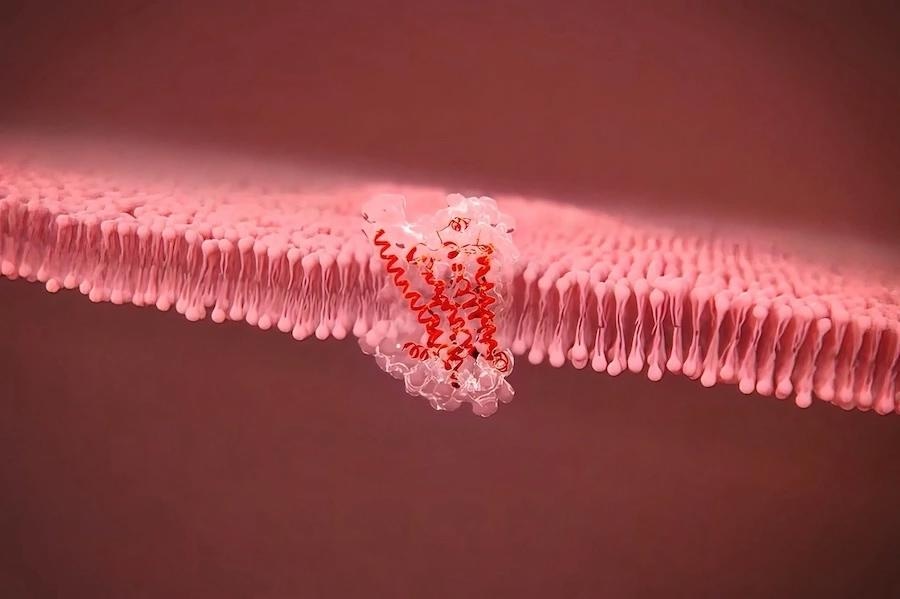Over a one-third of FDA-approved drugs tend to function by targeting a G protein-coupled receptor, or so-called GPCR. The human body consists of over 800 kinds of GPCRs that offer cells with data concerning the external surrounding to calibrate responses.
 3D illustration of a G protein coupled receptor. Image Credit: Getty Images.
3D illustration of a G protein coupled receptor. Image Credit: Getty Images.
Drugs that either tend to block or activate GPCRs are utilized to treat an extensive range of diseases such as pain, hypertension, and inflammation. The majority of the drugs tend to bind to the receptors outside. However, this could lead to detrimental side effects since receptors tend to frequently resemble one another.
In a new study reported in the journal Nature, Sivaraj Sivaramakrishnan, a professor in the College of Biological Sciences, together with graduate student Fred Sadler and co-authors Michael Ritt and Yatharth Sharma, revealed the role of the third intracellular loop present in the GPCR’s signaling mechanism. This denotes the chance of a highly targeted method for drug discovery and a paradigm shift available for new therapeutics.
Typical GPCR drugs act as on or off switches for cellular signaling outcomes. Drugs that leverage the loop effectively can act as signaling dimmer switches to more precisely control drug responses.”
Sivaraj Sivaramakrishnan, Professor, College of Biological Sciences, University of Minnesota
New biophysical and biochemical tools were developed by the authors and integrated with computational measurements by collaborators Ning Ma and Nagarajan Vaidehi at the City of Hope Cancer Center.
The researchers tracked how the third intracellular loop tends to alter in shape, or conformation, via the receptor signaling process. In discovery for the field, their data display that the loop serves as a type of gate to guarantee that receptors tend to trigger the right kind of G protein signaling at the correct intensity.
A key advantage of this loop is that it is highly unique, even among closely related receptors, making it an outstanding drug target. Developing drugs through this newly discovered mechanism would allow for far more targeted therapeutics.”
Fred Sadler, Graduate Student, University of Minnesota
Source:
Journal reference:
Sadler, F., et al. (2023) Autoregulation of GPCR signaling through the third intracellular loop. Nature. https://doi.org/10.1038/s41586-023-05789-z.